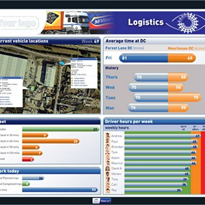It has suffered significant losses in the Covid-19 pandemic, but now that economy is slowly bouncing back, this sector has gradually started to align itself to the world’s rapid growth and consumerism. The adoption of IoT (Internet of Things), including Connected Logistics, can now provide actionable insights and enable more informed decision-making.
Let us take a look at how Connected Logistics and IoT are transforming the jewelry industry:
Optimizing inventory
Jewelers have to maintain a high-value inventory when it comes to their accessories and pieces. Materials being out of stock, or being excessively in stock, doesn’t look good! Reordering can be complex to manage as any delay in restocking can lead to revenue leakage. It is imperative to integrate analytics into the in-store sales system, so a real-time inventory status can be obtained along with other valuable indicators. Thus, retailers can transfer slow-moving items between stores and optimize stock levels in showrooms depending upon current trends and demand.
Predictive maintenance
Thanks to IoT-driven data analytics, predictive maintenance solutions can help avoid manufacturing equipment failures and exorbitant maintenance costs. It can also help to minimize staffing by automation of the assembly line, boost the efficiency of production, decrease costs and increase overall revenue.
SMART wearables
With the advent of digitization, consumers now want jewelry that goes beyond aesthetics. People want a combination of fashion and IoT, which has led to SMART (self-monitoring and reporting technology) products. These are available in the form of wearable jewelry pieces that perform a wide range of functions such as making phone calls, keeping a check on stress levels, and even monitoring sleep patterns.
Sales analysis and outlet performance
A complete sales analytics and expense report from the data collected can help analyze sales and expenses, based on location, product type, and other parameters. From a centralized sales analytics dashboard, one can monitor and measure sales performance by product categories, groups, showrooms, regions, and sales personnel. Business managers can identify bottlenecks and sales laggers, detect root causes, and implement suitable solutions. Businesses with several outlets can leverage the power of advanced analytics to process data and get useful insights on performances at different outlets, areas that need improvement etc. Management reports can be generated from the data visualization dashboards and new approaches implemented by the management based on these insights.
Security
Thanks to Connected Logistics and IoT-enabled sensors, expensive jewelry can be monitored and tracked 24×7. Business managers can keep an eye on their precious cargo while it is being transported, while an alert is immediately sent to them in case of possible damage and theft. Even if there is a road mishap or accident, assistance can be dispatched quickly, in order to minimize losses to the business.
Connected Logistics will continue to revolutionize the jewelry industry in the years to come, especially with the advent of blockchain to enhance stock traceability in the supply chain, while ensuring the merchandize stays safe till it arrives at the destination.






















-205x205.jpg)